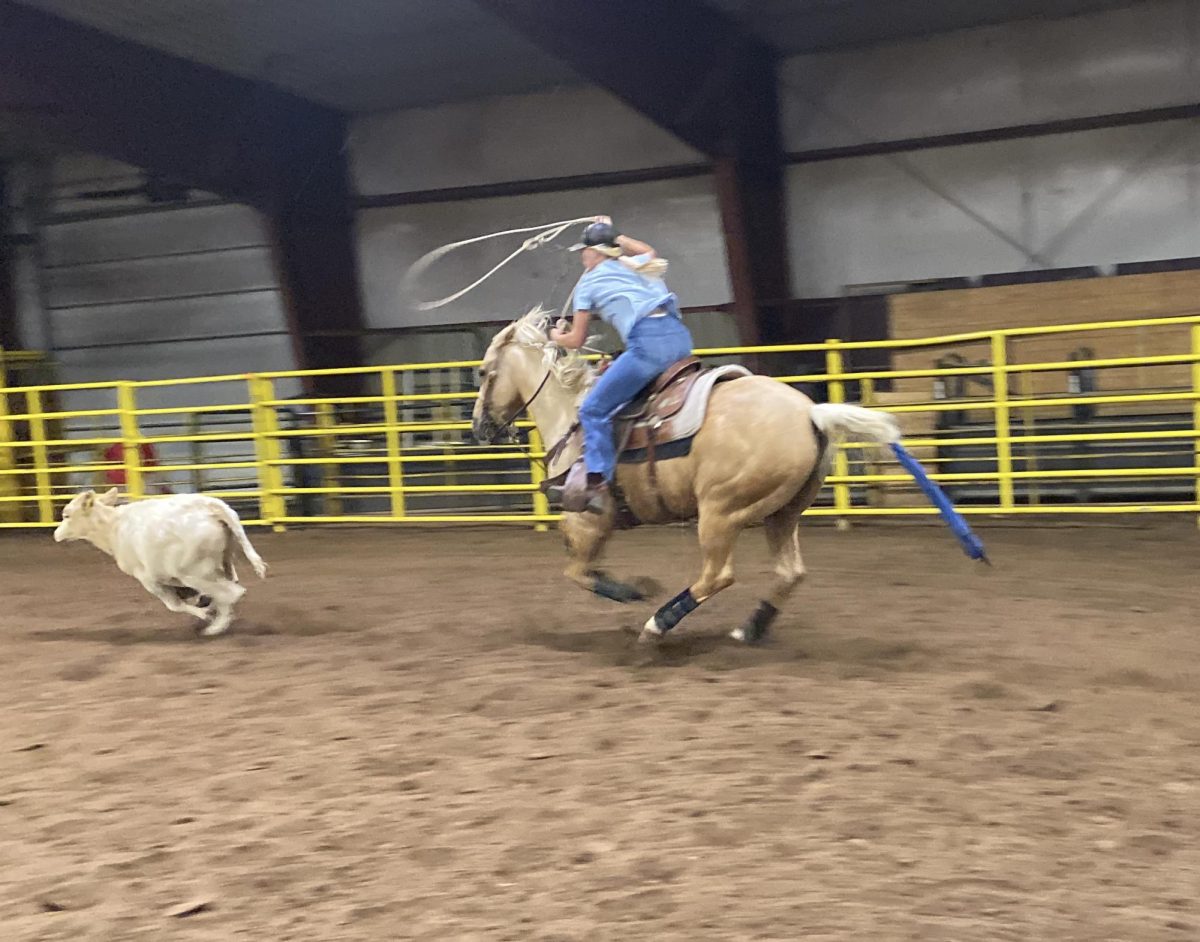Pulling into the Seven Downs Arena, home of the Black Hills State University’s rodeo team, I could see members of the team hard at work. Nearly an hour before practice started, several people were already there cleaning stalls, saddling horses and loading trailers in preparation for that weekend’s rodeo.
“It’s not really a sport, it’s a lifestyle,” said Haven Jones, a BHSU senior and member of the rodeo team. “Rodeo is all day, every day. We wake up at 7 a.m. to feed [horses] and don’t go to bed until 10 p.m. after we’ve fed. We’re constantly taking care of our animals and we’re constantly thinking about it.”
The BHSU Rodeo Team practices four days a week and competes at college rodeos or jackpots Friday through Sunday. Though the team does practice together from 3-6 p.m., members often work on their own throughout the day as well.
The arenas are available for use beginning as early as 7:30 a.m. and do not close until after 6 p.m. During practice, the team takes turns alternating who is practicing and who is assisting. For example, when they are breakaway roping, one group will rope while another runs the chute, then they will switch roles.
One of the most common misconceptions regarding the sport of rodeo, at any level, is that the mistreatment of animals is tolerated. Every rodeo organization has a set of rules and guidelines in place to protect the animals, and breaking these rules results in a fine and/or disqualification, depending on the severity.
Those competing in college rodeos follow more than 20 regulations set in place by the National Intercollegiate Rodeo Association to ensure animal welfare, and the Professional Rodeo Cowboys Association has over 60 rules.
“We treat our horses better than we treat ourselves,” said Emma Ohm, a sophomore who competes in breakaway roping, team roping and goat tying. “We have to keep our animals as happy and healthy as possible, otherwise we can’t be successful.”
Unlike other college sports, rodeoing at the college level does not alter whether an individual can rodeo professionally or not. When a contestant turns 18, he or she can purchase a permit and begin entering PRCA sanctioned rodeos. The contestant can compete on their permit for as long as they want, or until they have made $1,000 in earnings.
Athletes competing in college rodeo while also pro rodeoing on their permit are allowed to rodeo on their permit until they have graduated. Some college rodeo athletes choose to pro rodeo while in college, such as BHSU’s Haven Jones, who has been pro rodeoing for the past three years while also competing at the collegiate level.
Rodeoing with a permit card allows you to qualify for circuit finals, but not the National Finals Rodeo. Once a contestant has earned $1,000, they can purchase a PRCA contestant card, which allows their earnings to be counted towards the world standings and possibly qualify for the NFR.
“Just because you don’t do good at the college rodeos doesn’t mean you can’t pro rodeo and make the NFR,” said Karli Verhulst, a BHSU senior who competes in barrel racing, breakaway roping and goat tying.
Even though these athletes are technically competing against each other, they are always willing to lend their teammates a hand. Whether it be helping at practice, loaning a horse or just voicing words of encouragement, the team is always there for each other. As Haven Jones experienced, even when you are new to the team, they have no problem helping.
“It was my first rodeo with BH; I was super nervous because I didn’t know anyone or how this region worked, but everyone jumped in and was super supportive,” Jones said. “I’ve never had a whole team of girls cheering me on.”
Although BHSU has a smaller rodeo program in terms of funding compared to some of its competitors, this has not stopped the team from competing at the highest level. Following the Buena Vista Stampede, the last rodeo of the fall, both the BHSU men and women’s teams are in first place in the region standings.
“Coach [Glen] Lammers is really good at pushing positivity,” Ohm said. “He preaches you can only control what you can control, so don’t worry about anything else. You just have to be mentally strong enough to rise above your circumstances.”


